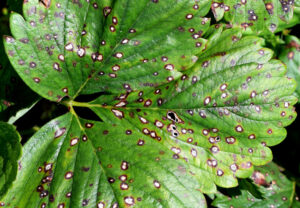Overview of Common Plant Diseases
Common plant diseases are typically defined as disturbances in plants caused by pathogens or environmental factors that interfere with their normal growth, vitality, or reproduction. These diseases can drastically impact crop yields, both in quantity and quality, posing significant threats to food security. Understanding plant diseases is crucial for the development of effective management strategies, enabling farmers, gardeners, and agricultural professionals to take preventative measures, deploy timely treatments, and ultimately safeguard our global food supply.
The presence of diseases within a garden can severely diminish plant health and overall productivity. Infected plants often exhibit symptoms such as stunted growth, discoloration, wilting, and the appearance of spots or mold which can lead to reduced blooming and fruiting, compromising the aesthetic value and the yield of the garden. For enthusiasts and professionals alike, this can mean a direct economic loss and the potential spread of pathogens to healthy flora, thereby escalating the impact across the entire ecosystem. Therefore, proactively managing plant health through regular monitoring and implementing disease prevention techniques becomes essential for maintaining a thriving garden.
Common Plant Fungal Diseases
Powdery Mildew
Powdery mildew is a common fungal disease that affects a wide variety of plants. It is characterized by a white or gray powdery growth on the leaves and stems, and can lead to leaf yellowing, browning, and premature droppage. While not typically fatal, the mildew can weaken plants and reduce photosynthesis, impacting the plant’s vigor and fruit production.
Root Rot
Root rot occurs when overwatering or poor drainage causes the roots of a plant to decay. Symptoms include a decline in growth, yellowing leaves, wilting, and a rotting base. The best defense against root rot is prevention through well-draining soil and careful watering practices. However, once affected, it may be necessary to remove the plant to prevent the spread of the disease to nearby plants.
Black Spot
Black spot is a fungal disease that is particularly prevalent in roses, although it can affect other plants as well. It appears as circular black spots with fringed margins on the leaves, which may yellow and drop prematurely. Black spot thrives in warm, humid conditions, and controlling it involves improving air circulation around the plants, removing infected leaves, and applying appropriate fungicides.
Rust
Rust is another fungal disease identified by rust-colored spots or patches on leaves and stems. These spots release spores that can infect other plants, which may result in defoliation and reduced plant vigor. To manage rust, gardeners should remove and destroy infected plant parts, avoid overhead watering that can spread spores, and consider the use of resistant plant varieties or fungicides.
Organic Treatments
For those seeking a more natural approach to combating fungal diseases, there are several organic options available. Neem oil, extracted from the seeds of the neem tree, has both antifungal and insecticidal properties, making it a popular choice for organic gardeners. Another effective treatment is the application of a baking soda solution, which creates an alkaline environment on the leaf surface, inhibiting fungal growth. Additionally, compost tea, made by steeping well-aged compost in water, can help bolster plant immune systems and prevent fungal disease when used as a foliar spray.
Chemical Treatments
In more severe cases, or as a preventative measure, chemical fungicides can be utilized. These often provide quicker and more complete control of fungal diseases compared to organic methods. When selecting a fungicide, it’s important to choose one that is specifically labeled for the disease you’re battling, as different fungicides target different fungi. Careful application according to the manufacturer’s recommendations is crucial to minimize environmental impact and prevent harm to beneficial organisms. Always use chemical treatments as a last resort and follow safety protocols to protect yourself and the environment.
Early Detection and Diagnosis
Early detection and diagnosis of fungal diseases are paramount in maintaining plant health and preventing widespread infection. Gardeners should regularly inspect their plants for early signs of disease, such as unusual spotting, discoloration, or the presence of powdery substances on leaves and stems. Immediate identification is crucial, and in some cases, laboratory analysis may be necessary for accurate diagnosis. Integrating routine monitoring with proper cultural practices, such as spacing plants for air circulation and applying mulch to reduce spore splash, can greatly reduce the incidence of fungal diseases. As with many aspects of gardening, being proactive is key to managing plant health.
Common Plant Bacterial Diseases
Fire Blight
Fire Blight is a destructive bacterial disease that primarily affects members of the Rosaceae family, such as apples, pears, and certain ornamentals. It is characterized by a sudden wilting, blackening, and eventual death of blossoms, fruit, shoots, and branches. Preventative measures include choosing resistant varieties and implementing proper pruning techniques. During an outbreak, affected parts of the plant should be removed and destroyed, and bactericide treatments may be necessary to prevent further infection.
Bacterial Spot
Bacterial Spot is a disease that impacts many plants, including tomatoes, peppers, and stone fruit trees. It presents as small, water-soaked spots on leaves, fruits, and stems which later turn into brown or black lesions. Managing the disease involves using disease-free seeds and transplants, applying copper-based bactericides, and practicing crop rotation. Maintaining good air circulation and avoiding wetting the foliage can also help prevent the spread of bacterial spot.
Crown Gall
Crown Gall is a soil-borne bacterial disease attributed to Agrobacterium tumefaciens. It causes tumor-like swellings, known as galls, at the base of the plant or at the junction of roots and stems. These galls can disrupt the flow of nutrients and water, stunting plant growth. There is no cure for Crown Gall; thus, prevention is crucial. This includes planting resistant species, avoiding mechanical damage to plants, and sterilizing garden tools to prevent the spread of the bacterium.
Organic and Chemical Treatment Strategies
In the battle against bacterial diseases in plants, both organic and chemical treatments play crucial roles. Organic approaches prioritize natural methods and substances to combat pathogens, such as using biocontrol agents like beneficial bacteria and fungi that outcompete harmful bacteria. Compost teas and plant extracts with antimicrobial properties can also bolster plant defenses. On the chemical front, copper-based bactericides are commonly applied to prevent and control bacterial infections. However, it’s vital to follow label instructions to avoid excessive buildup in the soil, which could be detrimental to both the environment and the microbiome essential for plant health. Integrating both organic and chemical strategies, where appropriate, can offer a more robust defense against bacterial diseases while striving for environmental sustainability.
Early Detection and Diagnosis of Bacterial Diseases
Early detection and accurate diagnosis of bacterial diseases in plants are critical steps toward effective management. Vigilant monitoring and regular scouting for symptoms are the first lines of defense. Signs of infection, such as leaf spots, wilts, and blights, should prompt immediate lab testing to confirm the presence of bacterial pathogens. Utilizing diagnostic tools like ELISA, PCR, or bacterial culturing can determine the specific bacterium responsible. Gardeners and farmers should also pay close attention to changes in plant appearance and behavior, which could indicate underlying issues. Proactive measures and timely identification not only help in applying the appropriate treatment in a targeted manner but also aid in preventing the spread of the disease to other plants.

Common Plant Viral Diseases
Tobacco Mosaic Virus
Tobacco Mosaic Virus (TMV) is a highly infectious plant virus that can affect a wide range of plants, including tomatoes, peppers, and of course, tobacco. The most recognizable signs of TMV are a mosaic pattern of light and dark green on the leaves, stunted growth, and malformed fruits. Management of TMV includes using virus-free seeds and plant material, disinfecting tools and gardening equipment, and employing good sanitation practices to prevent its spread.
Cucumber Mosaic Virus
Cucumber Mosaic Virus (CMV) is another pervasive virus notorious for infecting over 1200 species of plants, including cucumbers, melons, and squashes. Symptoms typically include yellowing of leaves, a shoestring appearance of the growth of leaves, stunted growth, and reduced yield. Management practices focus on controlling aphid populations, which are the primary vectors of this virus, removing and destroying infected plant debris, and growing resistant cultivars when available.
Tomato Spotted Wilt Virus
Tomato Spotted Wilt Virus (TSWV) can wreak havoc on a variety of plants, particularly economically important ones like tomatoes, peppers, and lettuce. The disease presents as dark brown or black spots on leaves, fruits, and stems, eventually leading to plant death in severe cases. Controlling TSWV involves managing thrips, which are the main vectors of the virus, using resistant plant varieties, and practicing crop rotation and removal of weeds that may harbor the virus and the thrips vector.
Prevention and Control
Preventing the spread of plant viruses such as TMV, CMV, and TSWV involves a multifaceted approach. Start with the adoption of certified disease-free seeds and transplants to minimize the risk of introducing viruses into the garden or farm. Implement stringent hygiene practices, including regular cleaning and disinfection of tools and equipment, as well as gardeners’ hands and apparel. Crop rotation is another effective strategy, as it disrupts the lifecycle of vectors and soil-borne pathogens. Moreover, the cultivation of resistant or tolerant plant varieties provides an additional layer of defense against these pervasive plant diseases. Regularly monitoring for signs of infection and promptly removing infected plants helps prevent the spread of these viruses. It is also crucial to manage vector populations through the use of appropriate insecticides and biological controls, alongside maintaining a weed-free environment to eliminate alternative hosts for both viruses and their vectors.
Organic and Chemical Treatments
When opting for treatments to combat plant viruses like TMV, CMV, and TSWV, gardeners and farmers have an arsenal of organic and chemical options. Organic measures include the application of neem oil, insecticidal soaps, and horticultural oils that can deter or eliminate vector pests without harming beneficial insects. These environmentally-friendly treatments must be applied with precision and consistency for optimal effectiveness. On the chemical front, targeted use of systemic insecticides can provide a more immediate knockdown of thrips populations. However, it is essential to use such treatments judiciously to minimize risks to non-target organisms and prevent the development of insecticide resistance. As always, integrating these treatments with the overall pest management strategy can help maintain plant health and ensure sustainable crop production.
Early Detection and Diagnosis
Identifying plant viral infections early is paramount in managing and controlling outbreaks. Early detection allows for the immediate implementation of control measures, which can significantly reduce the spread of the virus and its vectors. Diagnosis can be accomplished through visual inspection for common symptoms, such as mosaic patterns on leaves, stunted growth, and malformed fruits. Advanced diagnostic techniques, like ELISA and PCR-based methods, can confirm the presence of a virus and identify it precisely, which is crucial for deploying the most effective management strategy. Consistent and vigilant monitoring for signs of disease, coupled with swift diagnostic methods, underpins successful disease management programs and is vital to preserving the health of agricultural ecosystems.
Conclusion
In conclusion, plant viruses are a significant threat to global food security and can cause devastating economic losses. While there is no single solution for managing these complex pathogens, an integrated approach that combines cultural practices, biological control measures, and targeted chemical treatments can effectively reduce their impact on crop production. Early detection and diagnosis also play critical roles in mitigating the spread of viruses and protecting plant health. As we continue to face new and emerging plant viruses, it is essential to stay informed about the latest management strategies and work towards sustainable solutions for long-term crop protection.

